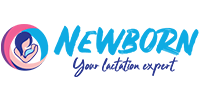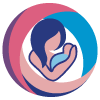Thrush
If you experience pain in both breasts, often after a period of pain-free breastfeeding, and the pain lasts for up to an hour after a feed, you may have developed thrush.
Breast and nipple pain in breastfeeding women is sometimes caused by a thrush (candida) infection in the breast. Breastfed babies can also develop thrush in their mouths.
Thrush infections sometimes happen when your nipples become cracked or damaged. This means the candida fungus that causes thrush can get into your nipple or breast.
Thrush infections can also happen after you or your baby has had a course of antibiotics. Antibiotics may reduce the number of helpful bacteria in the body and allow the candida fungus that causes thrush to flourish.
Signs of thrush in breastfeeding women
You may have a thrush infection in your breasts if:
It’s not likely to be thrush if:
Symptoms of oral thrush in breastfed babies
Signs to look for include:
If you suspect you or your baby has a thrush infection, see your health visitor or GP. They can arrange for swabs to be taken from your nipples and your baby’s mouth to see if thrush is present. It’s important other causes of breast pain are ruled out before you start treatment for thrush.
If no thrush is present, the pain may be caused by something else, such as poor positioning and attachment. It’s important for your midwife, health visitor or a breastfeeding specialist to watch you do a full breastfeed and give advice if needed.
If either you or your baby does have thrush, you’ll need to be treated at the same time as the infection can easily spread between you. It can also spread to other members of the family.
Washing your hands carefully after nappy changes and using separate towels will help prevent the infection spreading. You’ll also need to wash and sterilise any dummies, teats or toys your baby puts in their mouth.
You’ll need to wash any breastfeeding bras at a high temperature and change your breast pads frequently while you’re both being treated.
If you express any breast milk while you have thrush, you’ll need to give the milk to your baby while you’re still having treatment. Freezing it and using it may mean the thrush comes back at a later date.


